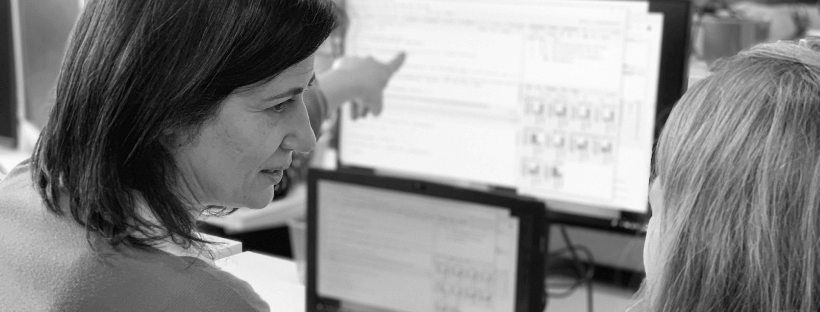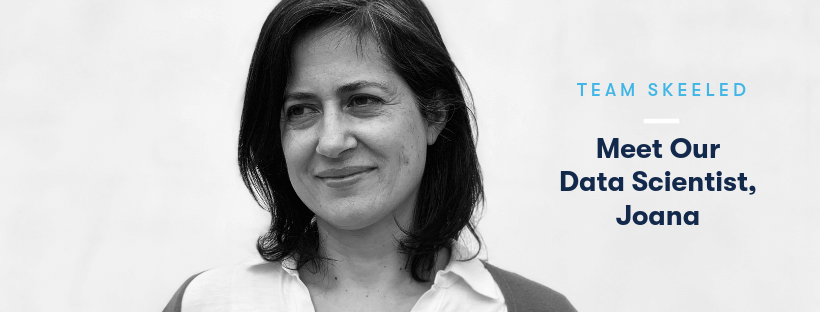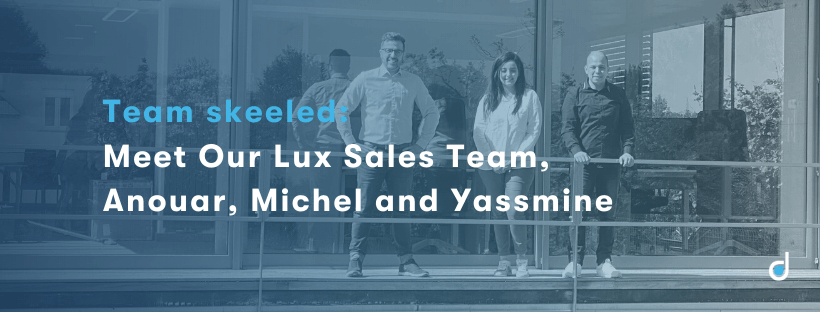Time to resume our team skeeled articles! Today I introduce our data scientist, Joana Urbano.
With a PhD in Distributed Artificial Intelligence from the University of Porto, Joana has been working as a data scientist since 2016 and joined skeeled almost a year ago. Before working in Data Science she developed her career in the higher education sector, working as a Professor for more than 14 years.
As part of our Research & Development team, based in Porto, she is responsible for the Artificial Intelligence projects. Mostly in the area of data analysis, visualisation, dynamic report generation, and machine learning. She loves to tidy data, discover meanings and patterns, and to write technical documentation.
Despite working in Porto, Joana lives in the centre region of Portugal, in Coimbra. In her spare time, she likes to spend quality time with her 5-year-old son, Gonçalo, and her family. On weekends, she enjoys relaxing in the countryside, with no sense of time or schedules, just gardening, playing games, cooking, or simply sunbathing on the porch. When she has some extra time, she also likes to research on past people, places, customs, and general history of Coimbra, her city.

I had the chance to chat with her about her professional background and her experience here at skeeled. Check out what she had to say:
1. What Motivated You to Work in Data Science?
I started my career following the typical path in computer science as a programmer and project manager, and then I moved into an academic career where I taught and researched for about 14 years in the area of information systems. It was during my PhD that I got in touch with machine learning and that I realised how much I enjoyed analysing the results of my simulations and trying to figure out what the data at hand really meant. By this time I also had the chance to take the famous Machine Learning course by Andrew Ng that further sharpened my curiosity and willingness to work on Machine Learning.
Hence, it was with great enthusiasm that in 2016 I ventured into the world of Data Science, participating, first, in a project where I worked with human physical and behavioural data raised by sensors, and then with flight data from the main Portuguese airline. Although I liked my previous occupations, it was with Data Science that I really achieved this feeling of freedom and conquest that I was looking for.
2. What Skills Help You Most as a Data Scientist?
I would say that my best skills are my analytical aptitude, my taste in discovering information, in exploring new strands, and in asking and eliciting requirements, for instance, from domain experts.
Additionally, I think that my previous background as an academic in information systems and as a researcher in the Artificial Intelligence and Computer Science Laboratory of the University of Porto are also a plus. It allows me, not only, to better combine the needed business focus in what I am doing with a scientific methodology, which I consider essential in Data Science, but also, to establish a contact network that allows us at skeeled to collaborate with academia and to be in permanent contact with state-of-the-art AI technologies.
3. What’s Your Job Like? What do You do and What Kind of Projects Are You Working on?
The skeeled Data Science department is expanding, which means that at present I have my time filled with several tasks of different nature. For example, at the management level, I define the Data Science strategy, the prioritisation of tools to be developed, the establishment of protocols with the Academy, the recruitment of new data scientists, etc. At the development level, I supervise and collaborate on different projects, such as, for example, a natural language processing project that we are developing with the collaboration of the University of Porto that will allow the automatic detection of ambiguities and contradictions in job descriptions. I also code a lot, and at the moment I am working on a new add-on for the skeeled app, a machine learning tool that allows recruiters to automatically find good fits for a new opening position within a pool of applicants that have applied to previous (possibly different) jobs. At a more analytical level, I periodically conduct different types of data analysis that provide different views and insights of both skeeled data and processes, and that are needed by our different departments. Also, I work in straight collaboration with our HR, Psychology and Customer Support experts to get the best insights from the collected data, in a process of continuous improvement of our app features and functionalities.

4. In Your Opinion, What Skills Should Business Executives Have, to Communicate Effectively With Data Scientists?
I think that, in general, entrepreneurs and business executives are increasingly aware of the existence of artificial intelligence and Data Science and consider the investment in Data Science. And they do so for a number of reasons, being because they know that Data Science can help them improve processes and gain efficiency, or because they do not want to lose competitive advantage over their competitors, or because they are fascinated by the buzzwords associated with artificial intelligence and Data Science, even if in some cases they do not know exactly what they mean.
So, even when business executives do not have any background in Data Science or related areas, they must ask themselves the following questions: what kind of data, and in what quantity, about my internal and external processes, is generated? Am I getting the most out of this data? Could I generate new tools, products, or services, or even optimise my internal processes, from proper processing of this data? Are my competitors making better use of their data? So, what I mean is that these executives do not need to have knowledge about specific Data Science tools, but they need to research a lot about what Data Science can do for their specific businesses and domains.
This is also valid when this preparatory work is accomplished and the investment in Data Science is already done. If business executives have clear ideas of their effective needs and aspirations in terms of better use of data or new features, they are sending unambiguous messages of what they want to the Data Science team; at the same time, they are able to better understand and debate what are the data scientists’ ideas and suggestions and to schedule resources and deadlines.
5. How is Artificial Intelligence Changing the World in General and Recruitment in Particular?
There is a lot going on in Artificial Intelligence and Computer Science in general. We are entering the Fourth Industrial Revolution, where everything is connected and generating tons of data (Internet of Things), machines are autonomous and able to learn. In fact, very recently we got the notice that Summit, the most powerful supercomputer in the world, broke the exaflop (a billion operations per second) barrier in a project to detect climate changes, using deep learning. This is a mark as it was the first time that deep learning Tensorflow was adapted to a giant scale, promising new machines that learn much more in much less time. Evident targets of such technology are, for example, the study of climate changes and the study of new medical drugs.
In the area of recruitment, I believe that artificial intelligence will be used essentially in extracting patterns and trends from massive amounts of information in a way that it is not possible for humans to do. For example, by having more and more data on employees' recruitment and performance appraisal processes, their career progression, their psychological profiles, etc., and imagining free access to all this data from millions of employees in different geographical areas, industries and types of employment, the computerised processing of this data will certainly enable better matches between candidates and job descriptions than those obtained by the traditional CV analysis of the candidates.
6. What’s Your Favorite AI Tool?
As I work mainly in tasks from machine learning, visualisation, NLP and data analysis, I really like to program in R and I use RStudio in my programming. With a huge community of users and developers, there is always a package available that can be used to solve a specific problem, besides that R is really, really good in statistics and visualisation.
Most recently, however, we started migrating parts of our tools to Python, mostly because of performance and integration issues and also because we are using much more NLP in our tools, so we will maintain R for analytical tasks and Python/Tensorflow in our machine learning algorithms.
Here are the links to the other articles of our "Meet the team" series:
- The Founders: Mike & Nicolas
- Head of Engineering: Artur
- Psychology Expert: António
- UI/UX Designer: Michael
- Head of Marketing: Brice

Skeeled offers you the perfect opportunity to bring innovation and digitalisation to your hiring. Check our website or our LinkedIn, Twitter and Facebook pages for further information.
Thanks for reading and see you next time!
Your team here at skeeled



